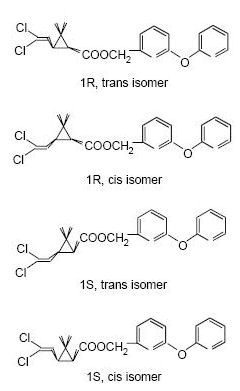
Pyrethroid (pyrethrum) is a botanical insecticide for centuries extracted from chrysanthemum flowers, known as pyrethrum daisies (tropical flower).
 |
Permethrin is a synthetic pyrethroid.
Pyrethroid (pyrethrum) is a botanical insecticide for centuries extracted from chrysanthemum flowers, known as pyrethrum daisies (tropical flower). |
|
| Permethrin |

Last update: June 6th 2009
Disclaimer and ©Copyright Stichting Adamanthea